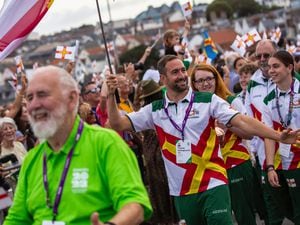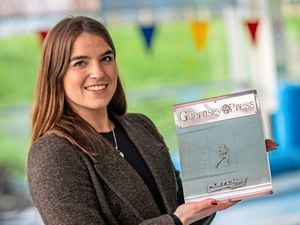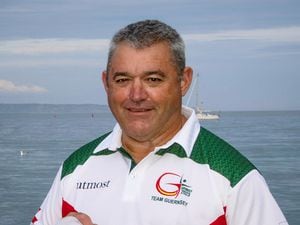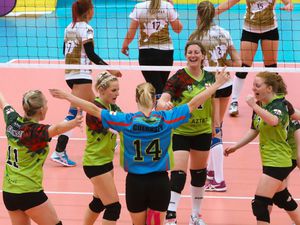Island Games: Get to know ... the Western Isles
THE Western Isles, also known as the Outer Hebrides or Na h-Eileanan Siar, are 15 inhabited islands – plus about 50 uninhabited ones – that occupy an area 50 times larger than Guernsey off the north-west coast of Scotland.
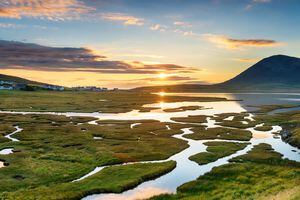
The main island of Lewis and Harris is home to just over 20,000 people but no other island has a population of more than 2,000.
‘We’ve got quite a variety of terrain spread over several different islands,’ said Western Isles Island Games Association assistant coordinator Michael Stone.
‘We’ve got the beaches, of course, but we also have lots of hill walking and, culturally, we’ve got our language.’
Having a native language is not a strange concept to us here in Guernsey, of course, but Gaidhlig – or Scottish Gaelic – is considerably more in evidence, still being the language most used in the Western Isles, ahead of English.
The islands are also awash with mesolithic sites such as the Callanish Stones and Cladh Hallan, where mummies have been unearthed.
With all that going on, it is not perhaps surprising that tourism persists as the mainstay of the economy. More than 200,000 visitors can be expected in a good season, with many attracted by the locals’ talents for weaving, distilling and making music.
The weaving results in the famous Harris Tweed, while the distilling has traditionally produced whisky but has recently branched out.
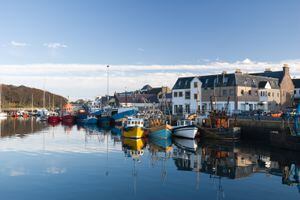
The Isle of Harris Distillery in Tarbert recently produced a gin that was voted Scotland’s favourite.
As for the music, the Gaelic traditions ensure a high level of musicality and have spawned the Hebridean Celtic Festival – or HebCelt, for short – which takes place in and around Stornoway, the most populous town.
This year’s HebFest showcases acts including Blood Harmony, Hannah Rarity and The Proclaimers.
But unfortunately, if any Western Isles competitors are keen to enjoy the award-winning festival with its extensive line-up, they’ll have to wait for another even-numbered year, as it clashes with the Island Games.
One of this year’s acts is of particular interest to them, however, and has already been very helpful in getting them to Guernsey.
‘There’s a band called Peat and Diesel who have had some chart successes,’ Michael said. 'They did a gig at Barrowlands in Glasgow and raised lots of money to get the Western Isles team to the Games.’
Michael describes his fellow islanders as ‘very friendly and welcoming’ and tells us that ‘on the smaller islands, everyone knows each other’.
‘We’re a very hospitable people and we love the Island Games because it brings all of our islands together.’
The big thing islanders love to moan about, he says, is ‘the issue with the ferries, the delays, and having to be reliant on them’.
As for sport, football dominates, but the Western Isles has made progress in several other disciplines.
They did not make an appearance when Guernsey last hosted the Games in 2003, but that was the year they were admitted into the IIGA, meaning they were ready to take part in 2005 in Shetland.
Despite their relatively late entry into the Island Games family, however, they managed to outshine their fellow Scottish islands last time out in Gibraltar, winning more golds than Shetland and Orkney put together.
Their team of 92 athletes for Guernsey 2023 is their biggest ever in the Island Games but it could easily have been much smaller if it were not for the men of Saaremaa.
Their decision not to take up their allocated place in the men’s football tournament opened it up for them to step in as first reserves, having initially missed out in the draw that reduced the original 19 entrants to 16.
Not surprisingly, this went down well back home.
‘They were gutted when the draw was made, so to find out they were back in was brilliant,’ Michael said.
They will provide Tony Vance and his squad with their first test on Sunday evening at the Track, while the Western Isles women’s team will go up against the hosts at the Corbet Field on Tuesday afternoon.
No competitors will be more excited than their archers or their women’s golfers, however, as these sports are being contested by the Western Isles for the first time, as they continue to expand their involvement in the Games.
About the Western Isles
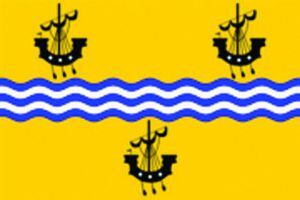
Area: 3,059 sq. km (1,181 sq. miles)
Population: 26,830 (2022 estimate)
Population density: 9 per sq. km
Time zone: Same as Guernsey
Distance from Guernsey: 976km (606m)
Total IG medals won: 76 (28 G, 22 S, 26 B)
Medals won in 2003: n/a
Competitors coming to Guernsey: 92
Route: Chartered flight from Stornoway to Guernsey
Sports in which competing: Archery, athletics, badminton, bowls, cycling, golf, football, shooting, swimming
Biggest sports star: Kara Hanlon (swimming)
National delicacy: Buntait agus Sgadan – salted herring with potatoes
Parliamentary representation: One MP in the House of Commons, one MSP in the Scottish Parliament and 29 seats in the Western Isles’ own council, called Comhairle nan Eilean Siar

